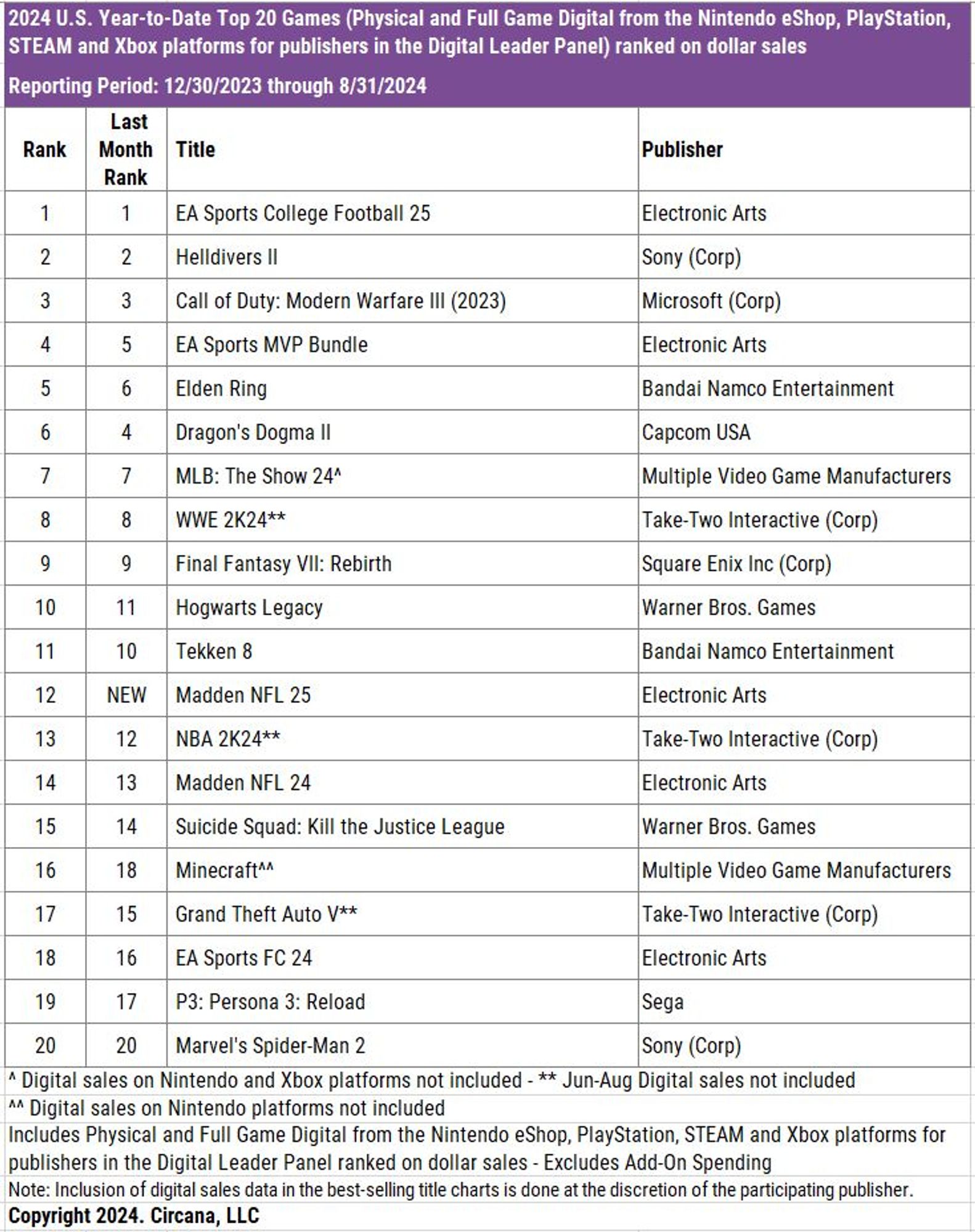Circana has released its monthly report on the US video game market. Here are the key takeaways, including the total spending, best-selling games, and most played titles.

Deadlock
- The US video game market generated $4.12 billion in August (down 7% year-over-year), according to Circana executive director and industry analyst Mat Piscatella. However, year-to-date spending is up 1% thanks to the growth in mobile revenue and accessories sales.
- Revenue from video game content reached $3.73 billion last month, down 5% year-over-year. “A 5% increase in Mobile content spending was offset by declines across other areas,” Piscatella noted.
- Hardware spending fell 36% year-over-year to $208 million. PlayStation 5 remained the leader in both unit and dollar sales, followed by Xbox Series X|S.
- Madden NFL 25 was the best-selling premium game in the US last month, marking the 25th consecutive year when a new Madden release topped the charts in its launch month.
- Other new titles that debuting on Circana’s charts in August included Star Wars Outlaws (#3), Visions of Mana (#10), and Gundam Breaker 4 (#11).
- Madden NFL 25 is already the 12th highest-grossing premium game in the US this year. EA Sports College Football 25 remains 1st in dollar sales year-to-date following its July launch.

Image credit: Circana
- Fortnite ranked 1st in monthly active users (MAU) on PlayStation 5, while Call of Duty led in engagement on Xbox Series X|S. Interestingly, Mafia: Definitive Edition jumped 451 positions to #7 on the most played Xbox games chart.
- The picture is different on Steam, where Valve’s upcoming MOBA shooter Deadlock topped MAU chart following its announcement on August 23 and extended playtest.

Image credit: Circana
- Sensor Tower told Circana that Monopoly Go! remained the top-grossing mobile game in the US, followed by Roblox, Royal Match, Candy Crush Saga, and Last War: Survival. Pokémon GO dropped four positions, while Call of Duty: Mobile returned to the top 10.
- Despite Monopoly Go!’s domination, the game “has declined about 32% in US consumer spend compared to its peak in March 2024.”
